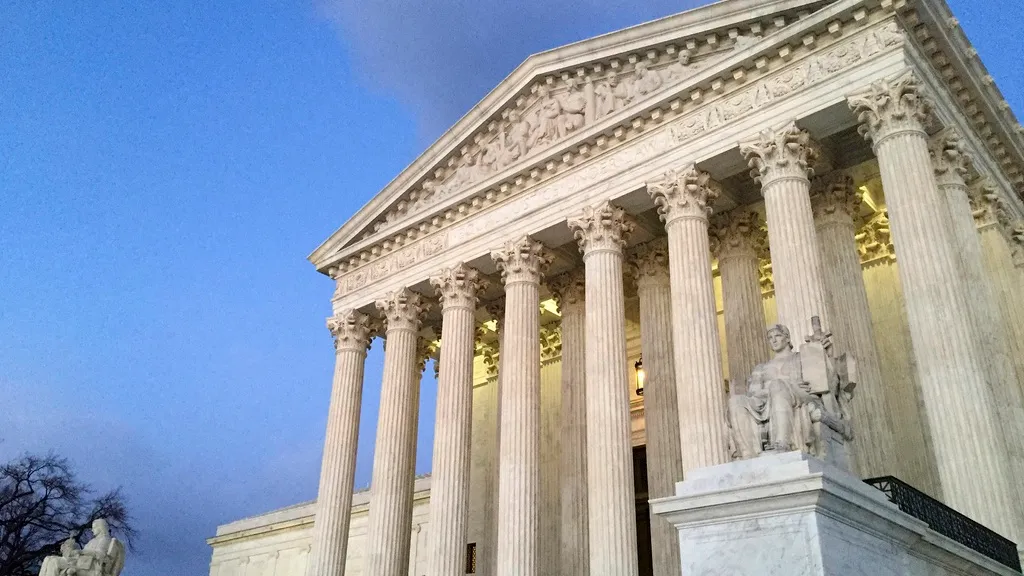November 30, 2011
American Airlines Files For Bankruptcy Protection
Jason St. Amand READ TIME: 5 MIN.
The parent company of American Airlines filed for bankruptcy protection Tuesday, seeking relief from crushing debt caused by high fuel prices and expensive labor contracts that its competitors shed years ago.
The parent company of American Airlines filed for bankruptcy protection Tuesday, seeking relief from crushing debt caused by high fuel prices and expensive labor contracts that its competitors shed years ago.
The company also replaced its CEO, and the incoming leader said American would probably cut its flight schedule "modestly" while it reorganizes. The new CEO, Thomas W. Horton, did not give specifics.
For most travelers, though, flights will operate normally and the airline will honor tickets and take reservations. American said its frequent-flier program would be unaffected.
AMR Corp., which owns American, was one of the last major U.S. airline companies that had avoided bankruptcy. Rivals United and Delta used bankruptcy to shed costly labor contracts, reduce debt, and start making money again. They also grew through mergers.
American - the nation's third-largest airline and proud of an 80-year history that reaches back to the dawn of passenger travel - was stuck with higher costs that meant it lost money when matching competitors' lower fares.
In announcing the bankruptcy filing, AMR said that Gerard Arpey, 53, a veteran of the company for almost three decades and CEO since 2003, had retired and was replaced by Horton, 50, the company president.
Horton said the board of directors unanimously decided on Monday night to file for bankruptcy. In a filing with federal bankruptcy court in New York, AMR said it had $29.6 billion in debt and $24.7 billion in assets.
In hearing in a packed bankruptcy courtroom on Tuesday in New York, a judge granted the airline permission to pay for fuel, labor, and other critical expenses to keep it flying. The hearing was an indication of how American will now need to run all of its financial decisions past a bankruptcy judge and, ultimately, creditors.
With reductions to the flight schedule, Horton said there would probably be corresponding job cuts. American has about 78,000 employees and serves 240,000 passengers per day.
AMR's move could also trigger more consolidation in the airline industry.
Some analysts believe American is likely to merge with US Airways to move closer to United Continental Holdings Inc. and Delta Air Lines Inc. in size. Such a merger would leave five large U.S. airlines compared with nine in 2008.
US Airways declined to comment.
American will delay the spinoff of its regional airline, American Eagle, which was expected early next year.
AMR, however, wants to push ahead with plans to order 460 new jets from Boeing and Airbus and take delivery of more than 50 others already ordered. New planes would save American money on fuel and maintenance, but the orders will be subject to approval by the bankruptcy court.
Analysts said all airlines will benefit if American reduces flights - especially if the cutbacks are more severe than American's new CEO is letting on. They said the chief winners were likely to be United and Delta, which compete for the same business travelers and have global networks like American's.
The losers will be American Airlines employees and AMR stockholders.
Shareholders almost certainly will be wiped out. The stock had already lost 79 percent of its value this year on fears of bankruptcy. The stock fell to 26 cents Tuesday, down $1.36 from the day before. In January 2007, after a 4-year rally, the shares peaked at $41.
AMR has lost more than $12 billion since 2001, and analysts expect it will post more losses through 2012. Speculation about an AMR bankruptcy grew in recent weeks as the company was unable to win union approval for contracts that would reduce labor costs. The company said it was spending $600 million more a year than other airlines because of labor-contract rules - $800 million more including pension obligations.
On Tuesday, Horton said no single factor led to the bankruptcy filing. He said the company needed to cut costs because of the weak global economy, a credit downgrade that raised borrowing costs, and high, volatile fuel prices. The price of jet fuel has risen more than 60 percent in the past five years.
Expectation of a bankruptcy filing increased in November as contract talks with the pilots' union stalled and union leaders rejected a company offer without sending it to members for a vote.
Ray Neidl, an analyst with Maxim Group LLC, an investment banking company, said AMR was wise to file for bankruptcy while it still had about $4 billion in cash. That way, the company will have a cushion to keep operating without worrying immediately about lining up new financing, he said.
Fitch Ratings analyst Bill Warlick said American will focus on shuttering pension plans and getting wage concessions from workers. Both Neidl and Warlick said American might be pushed into a merger with US Airways because size and global networks are more important than ever in the airline business.
Darryl Jenkins, a consultant who has worked for the major airlines, said, "American will still be with us in one form or another 10 years from now." But, he said, its workers will "take a major hit. Their pensions are in danger."
Union leaders expressed unease.
James C. Little, president of the Transport Workers Union, which represents mechanics, baggage handlers and other ground workers at American, was harsh in his assessment of the impact on labor.
"This (bankruptcy) is likely to be a long and ugly process and our union will fight like hell to make sure that front line workers don't pay an unfair price for management's failings," Little said.
AMR, which has headquarters in Fort Worth, Texas, lost $162 million in the third quarter and has lost money in 14 of the past 16 quarters.
The company barely escaped bankruptcy in 2003, when it was still reeling from the drop in air travel caused by a recession and the September 2001 terror attacks. That downturn helped drive United, Delta and US Airways into bankruptcy while American used the threat of a filing to wring wage and benefit concessions from workers.
American was founded in 1930 from the combination of many smaller airlines. Its hubs are in New York, Los Angeles, Dallas-Fort Worth, Chicago and Miami. Major international partners include British Airways and Japan Airlines.
News of the bankruptcy swept through AMR's hometown.
"American Airlines is an institution in Dallas-Fort Worth, and when institutions start to crumble, you look at everything around you," said Elaine Vale, a jewelry store owner who flew back from a Thanksgiving holiday on American. "After American, then who?"







